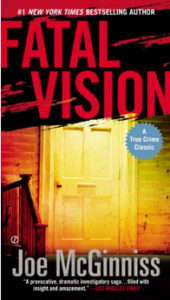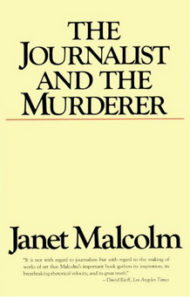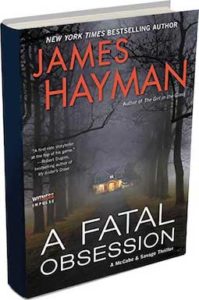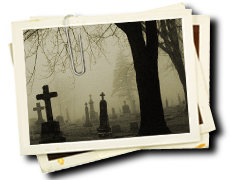“Fatal Vision” and “The Journalist and the Murderer.” A Tale of Three Very Real and Brutal Murders and the Problems With Writing About Them.
 In the early morning hours of February 17, 1970 in a three-bedroom apartment that was serving as married officers quarters at Forth Bragg, North Carolina, a twenty-six year old pregnant woman named Collette MacDonald and her two daughters, one aged five and the other just two, were stabbed and bludgeoned to death. Collette’s husband and the father of the two little girls, Captain Jeffrey MacDonald, a US Army physician serving with the Army Special Forces AKA The Green Berets, was also supposedly attacked but suffered only mild bruises and non-life threatening stab wounds. Captain MacDonald claims he regained consciousness to find the battered and bloody bodies of his wife and two daughters.
In the early morning hours of February 17, 1970 in a three-bedroom apartment that was serving as married officers quarters at Forth Bragg, North Carolina, a twenty-six year old pregnant woman named Collette MacDonald and her two daughters, one aged five and the other just two, were stabbed and bludgeoned to death. Collette’s husband and the father of the two little girls, Captain Jeffrey MacDonald, a US Army physician serving with the Army Special Forces AKA The Green Berets, was also supposedly attacked but suffered only mild bruises and non-life threatening stab wounds. Captain MacDonald claims he regained consciousness to find the battered and bloody bodies of his wife and two daughters.
The physical evidence at the scene suggested that it was Macdonald himself who had brutally murdered his entire family. However the physical evidence was badly compromised by the incompetence of the MPs who answered the initial call for help. MacDonald insisted to Army investigators that he was innocent and that the family’s apartment had been invaded by a band of drugged-up hippies, three men and one woman who had been shouting “Acid is groovy…Kill the pigs,” as they attacked the family with knives, an icepick and wooden clubs.
Over the course of the next nine years the three murders were investigated over and over again to determine whether MacDonald himself had, in fact, killed his family. The case was first investigated by Army CID which declared that MacDonald was innocent of the killings. The case then went to the Justice Department which after years of going back and forth, finally indicted MacDonald for the crimes. Four years after the initial indictment and nine years after the killings had taken place, MacDonald was tried in federal court and a civilian jury in Raleigh, North Carolina found him guilty of three counts of first degree murder. The judge sentenced him to three life sentences in prison, one for each of the killings.
For the entire nine years that this was going on, the handsome and charming Captain MacDonald insisted endlessly to anyone and everyone who would listen that he was innocent. He tried to get major magazines and newspapers to write about the injustice of the accusations. And he even managed to get himself interviewed on the popular late night network Dick Cavett TV show. As the case moved toward trial, MacDonald approached a well known author, Joe McGinniss, to write a book about it. McGinniss had become famous for his best selling account of Richard Nixon’s 1968 presidential campaign, The Selling of the President, but he needed another blockbuster project and so agreed.
MacDonald and his team of attorneys invited McGinniss to move into a North Carolina State University fraternity house that they had rented for the duration of the trial. He did so and they gave him complete and total access to all their discussions, deliberations and strategic planning for the defense. Over that time MacDonald and McGinniss ostensibly became the best of friends. They hung out together, went running together, went out drinking together and endless discussed the case and how MacDonald’s presumed innocence should be presented. MacDonald’s idea was that McGinniss would write the story of the trial in a way that utterly exonerated the doctor and would lead to a new trial in the unlikely event that Macdonald was found guilty.
There was only one fly in that particular ointment. During the course of the trial, Joe McGinniss became convinced, along with all twelve members of the jury, that MacDonald had, in fact, committed the murders. Following the conviction, McGinniss wrote a lengthy and very detailed book describing the murders and the subsequent court proceedings and describing in detail MacDonald’s and his attorney’s endless and often desperate attempts to avoid justice.
In the book, titled Fatal Vision, McGinniss filled in a lot of seeming blanks in the case by writing what really amounted to presumptions of how events he couldn’t have had first hand knowledge of had, in fact, occurred. These were convincing presumptions but presumptions nevertheless.
As the book became a major best-seller, Dr. MacDonald became furious with having been “betrayed” by the author. He filed a lawsuit against McGinniss accusing him of dishonesty, fraud and making false accusations. McDonald eventually collected three hundred thousand dollars in a settlement.
Ten years later, in 1990, another writer, Janet Malcolm, published a fascinating account of the ongoing battle  between Dr. MacDonald and Joe McGinniss and examining their differing accounts of what happened that night. Malcolm’s book is titled The journalist and The Murderer and it offers a fascinating insight into the problems of writing any so-called “True Crime” book and is definitely worth reading by anyone who reads or writes so-called “Non-fiction true crime novels” (a term initially used to describe Truman Capote’s In Cold Blood). Malcolm states her point of view about such books and particularly Fatal Vision very succinctly on the first pages of her book. Here’s what she says:
between Dr. MacDonald and Joe McGinniss and examining their differing accounts of what happened that night. Malcolm’s book is titled The journalist and The Murderer and it offers a fascinating insight into the problems of writing any so-called “True Crime” book and is definitely worth reading by anyone who reads or writes so-called “Non-fiction true crime novels” (a term initially used to describe Truman Capote’s In Cold Blood). Malcolm states her point of view about such books and particularly Fatal Vision very succinctly on the first pages of her book. Here’s what she says:
“EVERY journalist who is not too stupid or too full of himself to notice what is going on knows that what he does is morally indefensible. He is a kind of confidence man, preying on people’s vanity, ignorance, or loneliness, gaining their trust and betraying them without remorse. Like the credulous widow who wakes up one day to find the charming young man and all her savings gone, so the consenting subject of a piece of nonfiction writing learns—when the article or book appears—his hard lesson. Journalists justify their treachery in various ways according to their temperaments. The more pompous talk about freedom of speech and “the public’s right to know”; the least talented talk about Art; the seemliest murmur about earning a living. The catastrophe suffered by the subject is no simple matter of an unflattering likeness or a misrepresentation of his views; what pains him, what rankles and sometimes drives him to extremes of vengefulness, is the deception that has been practiced on him. On reading the article or book in question, he has to face the fact that the journalist—who seemed so friendly and sympathetic, so keen to understand him fully, so remarkably attuned to his vision of things—never had the slightest intention of collaborating with him on his story but always intended to write a story of his own. The disparity between what seems to be the intention of an interview as it is taking place and what it actually turns out to have been in aid of always comes as a shock to the subject.”
I read both the 700 page Fatal Vision and much shorter The Journalist and the Murderer over three long days I spent trapped in an easy chair unable to move about comfortably as I waited impatiently and in pain for hip replacement surgery which will happily takes place in just a few days now. I recommend both. They’re both fascinating and worth your time.
And please don’t forget to look for James Hayman’s latest McCabe/Savage thriller, A Fatal Obsession, coming out on August 21st and available for preorder now!
Follow Jim on Twitter or Facebook for more details!

